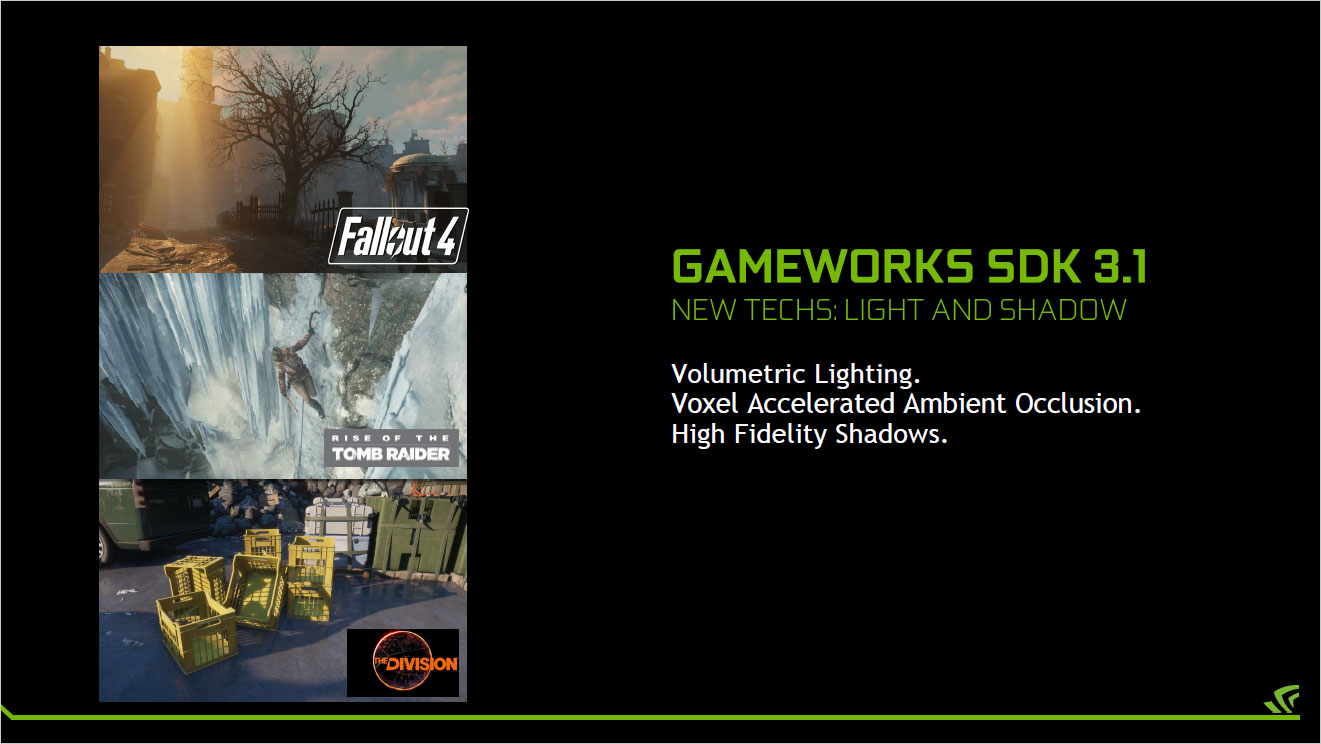Nvidia launches several new GameWorks libraries

Nvidia has been working hard to help software developers leverage advanced graphics techniques for years now, and as part of those efforts they’ve created their GameWorks libraries—and the associated VR Works as well. After several years of updates, Nvidia says they're now working toward a twice-yearly cadence for SDK updates, introducing new techniques in those releases. Not that they aren't working on stuff in between updates, and several of the new additions were actually developed in partnership with games studios, but if you're looking for the "fully baked" versions rather than beta techniques, the major SDK updates are what you'll want.
This week at GDC, Nvidia revealed their GameWorks SDK 3.2, with three new released technologies and two more techniques that are still in beta. Fundamentally, it's important to realize that these new technologies are often designed to help developers improve graphics fidelity, and in almost all instances there's an associated performance cost. How far developers want to go with utilizing new features is up to them, and while Nvidia creates the libraries, many of the effects do not inherently require Nvidia hardware—more on that in a moment. All three of the newly released techs are focused on light and shadows, and all three have been used in shipping games.
We've broken down the new tech over the next several pages:
- Volumetric Lighting
- Voxel Ambient Occlusion (VXAO)
- High Fidelity Shadows
- Nvidia Flow and Rigid Body Physics, and VR Works
Keep up to date with the most important stories and the best deals, as picked by the PC Gamer team.
Jarred's love of computers dates back to the dark ages when his dad brought home a DOS 2.3 PC and he left his C-64 behind. He eventually built his first custom PC in 1990 with a 286 12MHz, only to discover it was already woefully outdated when Wing Commander was released a few months later. He holds a BS in Computer Science from Brigham Young University and has been working as a tech journalist since 2004, writing for AnandTech, Maximum PC, and PC Gamer. From the first S3 Virge '3D decelerators' to today's GPUs, Jarred keeps up with all the latest graphics trends and is the one to ask about game performance.


